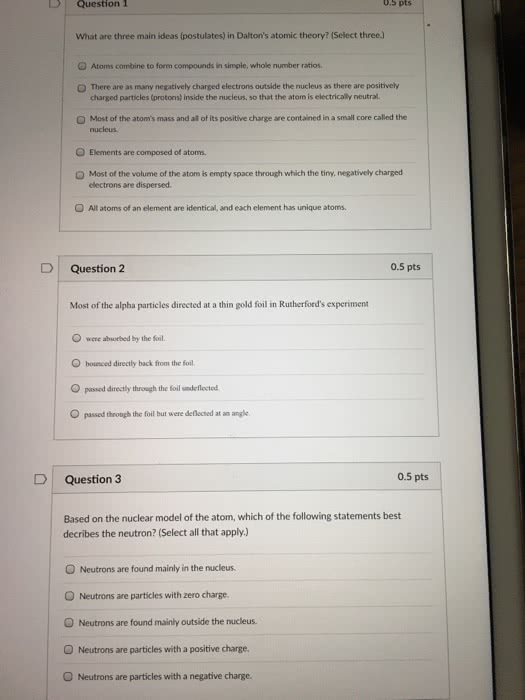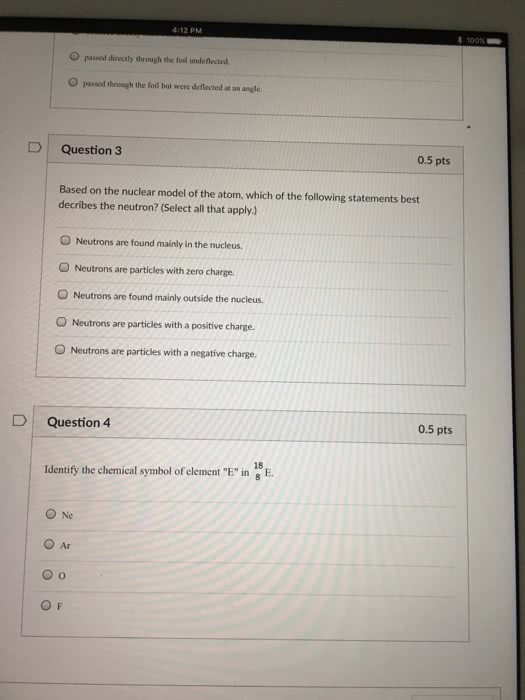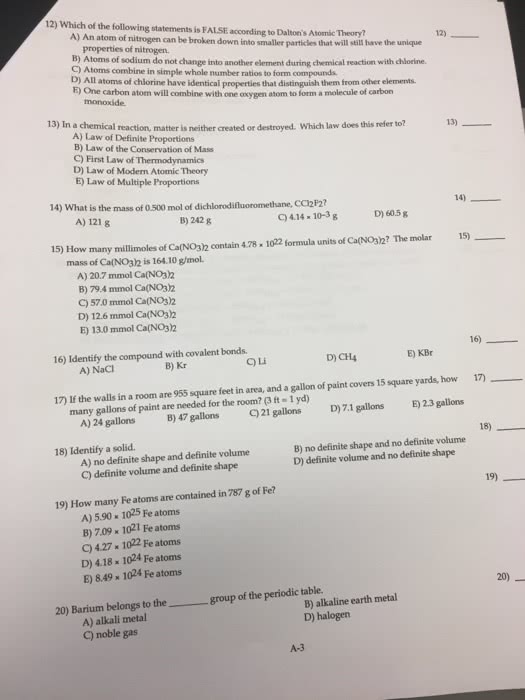CAS CH 101 Lecture Notes - Lecture 2: Antoine Lavoisier, Ernest Rutherford, Carbon Tetrachloride
Document Summary
A given compound always contains exactly the same proportion of elements by mass. Carbon tetrachloride is always 1 atom carbon per 4 atoms chlorine. When two elements form a series of compounds, the ratios of the masses of the second element that combine with 1 gram of the first element can always be reduced to small whole numbers. Each element is made up of tiny particles called atoms. Each compound has a specific number and kinds of atom. Early experiments to characterize the atom: j. thomson - postulated the existence of electrons using cathode ray tubes. Ernest rutherford - explained the nuclear atom, containing a dense nucleus with electrons traveling around the nucleus at a large distance. The mass and charge of the electron, proton, and neutron. The forces that hold atoms together in compounds. Ionic bonding: force of attraction between oppositely charged ions. Naming compounds: cation first, then anion, monatomic cation = name of the element.





